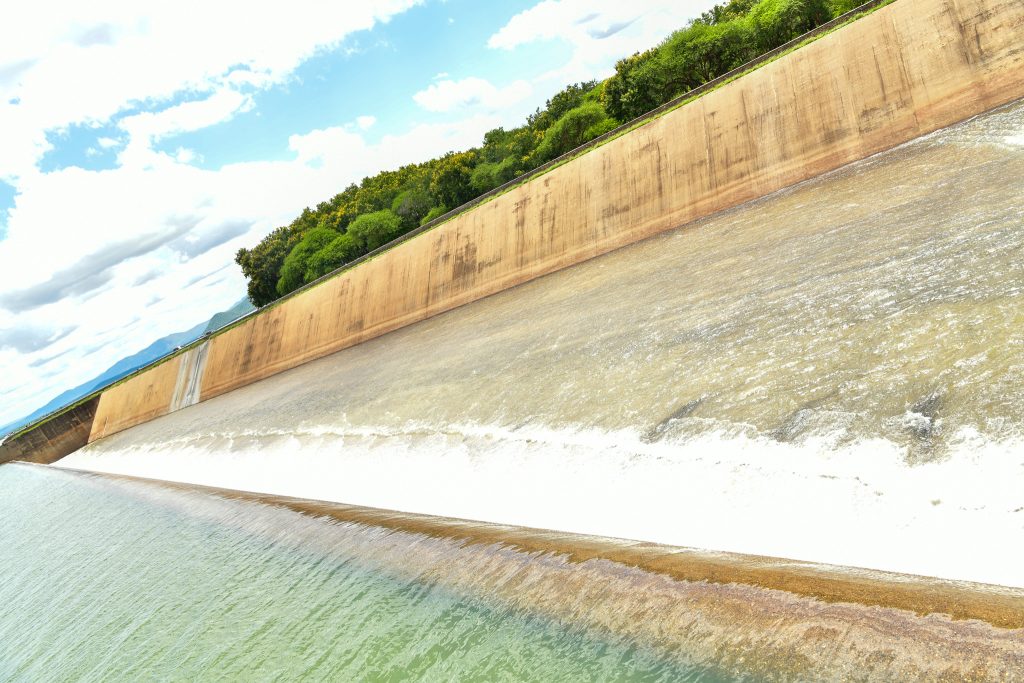
The level of water in Kenya’s largest hydro power generating dam,Masinga, located in the Seven Forks Cascade morning was at 1,058.22 meters above sea level against a full supply level of 1,056.50 meters.

This season has seen Masinga rise to the highest level ever recorded in history surpassing the previous record of 1,058.13 last recorded in May 2020.
This upsurge is attributed to a significant increase in the amount of water currently flowing into the dams averaging more than 850m3 per second over the last week caused by heavy rainfall in the dams’ catchment area.
It is expected that the water levels will remain high for most parts of May 2024 as the ongoing rains persist as forecasted by the Kenya Meteorological Department.
 KenGen reiterates that all its large hydropower dams in the Seven Forks have reached full supply capacity and now hold a combined volume of more than 2.6 billion cubic meters against a total flow from River Tana estimated at five (5) billion cubic meters. Other dams in the Seven Forks Cascade are Kamburu, Gitaru, Kindaruma, and Kiambere.
KenGen reiterates that all its large hydropower dams in the Seven Forks have reached full supply capacity and now hold a combined volume of more than 2.6 billion cubic meters against a total flow from River Tana estimated at five (5) billion cubic meters. Other dams in the Seven Forks Cascade are Kamburu, Gitaru, Kindaruma, and Kiambere.
“The Seven Forks dams hold the bulk of the water flowing from River Tana, way more than half the volume, which would otherwise be flooding areas downstream of the Dams thereby reducing the damage caused by the ongoing rains,” said KenGen’s Managing Director and CEO, Eng. Peter Njenga.

The NSE-listed firm however assured Kenyans about the safety of the dams which the company said were strongly built with all the safety features to withstand the high pressures of water allaying the risk of the dams bursting their banks.
“We constantly monitor our dams’ structure and would wish to assure all Kenyans that the dam safety measures we have put in place along with our disaster preparedness help allay risks of the water breaching the walls of the dams,” said Eng.Njenga.
Effectively, thanks to the good water inflows,KenGen has stepped up power generation from its large hydropower stations giving a reprieve to electricity consumers in Kenya.
 According to reports by EPRA released on April 29, 2024, against a peak demand of 2,033MW KenGen’s hydro contributed 36.5% while geothermal accounted for 32% boosting KenGen’s share to more than 70% of the total power consumed in Kenya.
According to reports by EPRA released on April 29, 2024, against a peak demand of 2,033MW KenGen’s hydro contributed 36.5% while geothermal accounted for 32% boosting KenGen’s share to more than 70% of the total power consumed in Kenya.
In November 2023, KenGen predicted that Masinga Dam was likely to reach full supply capacity and overflow in April 2024, which has come to pass.
 At that time,KenGen issued an early warning to communities living near the dams and rivers to relocate and move to higher grounds to avoid loss of lives and property.
At that time,KenGen issued an early warning to communities living near the dams and rivers to relocate and move to higher grounds to avoid loss of lives and property.
“We thank those who took our warning seriously and moved to safer zones and urge those still residing near the dams and river Tana to heed the Government’s call and move to safer grounds,” said Eng. Njenga, adding, “The communities residing in Mbondoni location, Kithecu, and Menguthe villages are particularly at risk.
Given the current circumstances, we must prioritize the safety and well-being of our citizens.”
Over the years, the dams have helped to regulate river flows and mitigate flooding downstream by temporarily storing the flood volume and allowing the water to naturally flow downstream later through the power plants.

This has been achieved through a robust water management plan for regulating storage and power generation to ensure a healthy ecosystem and less flooding during heavy rains.
“As projected by the Kenya Meteorological Department the rains are likely to go until the end of May, yet we need cheaper power for the entire year, this is why we are implementing a robust water management plan to enable us to supply hydropower all through the year to help stabilize the cost of electricity in Kenya,” said Eng. Njenga.
Going forward KenGen with the support of the Government is considering raising of Masinga Dam by 1.5 meters which will help hold more water and further delay the overflow of the dam during heavy rains.

KenGen’s hydroelectric power capacity currently stands at 826MW which accounts for 44% of its installed capacity and about 25% of the total national capacity.








